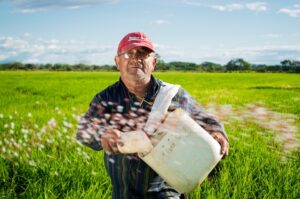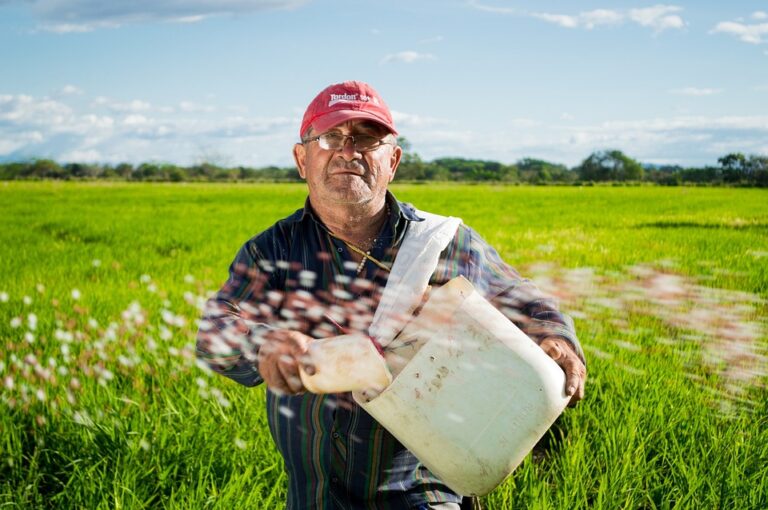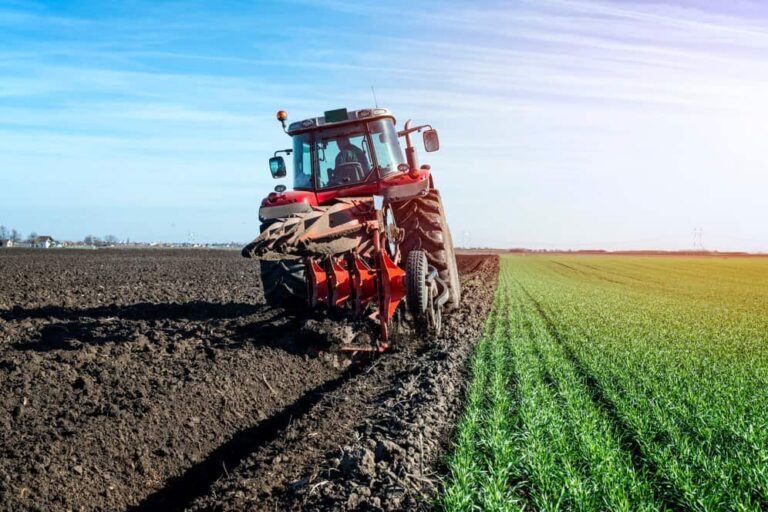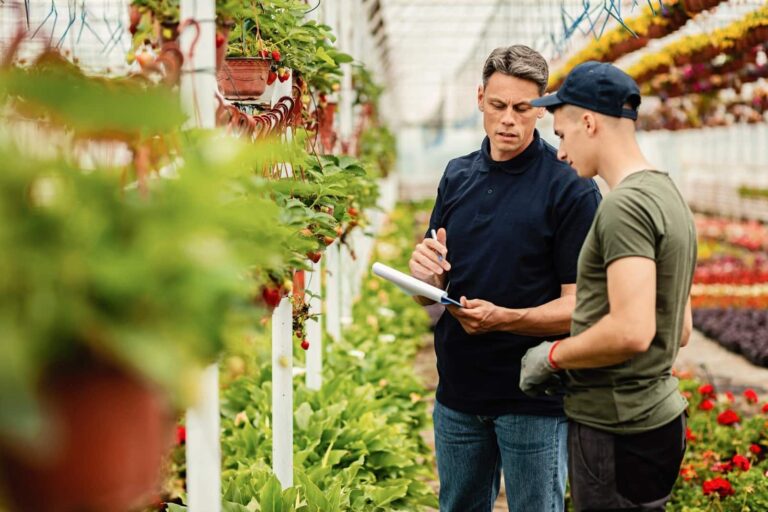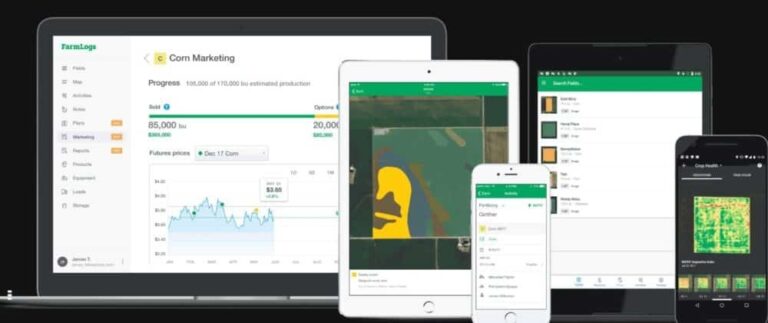Ah, the countryside! A vast canvas where the brushstrokes of farmers and the etchings of ranchers blend into a harmonious landscape. I’ve spent many a year with the earth under my fingernails and the wind at my back, and if there’s one truth I’ve unearthed, it’s that farmers and ranchers weave a complex but beautiful tapestry that sustains us all.
In this grand dance of cultivation and grazing, each step is as crucial as the last. Let me take you through the age-old rituals, the shared struggles, and the mutual benefits that define this unique relationship.
The Foundation of Mutual Respect
Imagine, if you will, the rolling fields and the open ranges as more than just scenery. They’re a stage for a partnership that’s as old as agriculture itself. Farmers, with their plows and seeds, transform the earth into bountiful crops. Ranchers, guiding their herds across vast pastures, manage the land in a way that no machine can. Each relies on the understanding that the land is a shared resource, needing care and respect.
A Shared Resource
- Water Management: In arid regions, water is as precious as gold. Farmers and ranchers often collaborate on irrigation projects that benefit both crops and cattle, ensuring sustainability.
- Land Conservation: Grazing cattle can help manage crop residues and control weeds, reducing the need for chemical herbicides. In return, crop rotations can rejuvenate overused pastures, making them more productive for grazing.
The Rituals of Exchange
This collaboration extends beyond the land. It flows into the very markets that sustain our economy. Farmers grow feed crops that nourish cattle, while ranchers’ herds provide manure, a natural fertilizer, which enhances crop yields without the need for synthetic alternatives.
Cycle of Nutrients
- Manure as Fertilizer: The nutrient-rich manure from ranchers’ cattle provides organic matter that improves soil health, increasing the soil’s water retention and fertility.
- Feed and Forage: In turn, farmers grow alfalfa, corn, and other forages, which are crucial for feeding livestock, particularly through harsh winters.
The Challenges They Face Together
It’s not all sunny days and gentle breezes; there are storms to weather as well. Market fluctuations, climate change, and land disputes put pressure on this partnership. Yet, it’s through these challenges that the strength of their bond is truly tested.
- Economic Pressures: When crop prices dip or when meat prices fall, it impacts both communities. They often have to come together to lobby for better policies or support systems.
- Environmental Concerns: Both groups are on the frontline of climate change. Together, they innovate more sustainable farming and ranching techniques to reduce carbon footprints and preserve the environment.
The Future Together
As we look to the future, the partnership between farmers and ranchers holds the key to innovations in sustainable agriculture. Younger generations are bringing new technologies and practices to these ancient professions, from precision farming to holistic grazing.
- Technology and Tradition: Satellite imagery for crop monitoring and automated feed systems for livestock are just the start. These tools help optimize resource use and increase productivity, ensuring a balance between tradition and modernity.
- Educational and Community Programs: Increasingly, universities and agricultural organizations are fostering programs that promote collaboration between farmers and ranchers, ensuring that the next generation understands the value of this partnership.
In closing, this age-old dance between farmers and ranchers is not just about livelihoods. It’s about sustaining a way of life that respects the past while embracing the future. As long as these two groups continue to work together, the agricultural tapestry they co-create will remain vibrant and resilient, just like the lands they tend and the communities they support.
Celebrating the Tapestry of Tradition and Innovation
As I’ve ambled through the years, I’ve seen remarkable resilience and innovation in the way farmers and ranchers adapt to changing times while holding fast to traditions that define their craft. The fabric of this community is woven with threads of history and progressive strides forward.
The Thread of Community Events
- Annual Fairs and Rodeos: These are not just entertainment but pivotal events where knowledge, livestock, and harvests are shared and celebrated. Farmers and ranchers come together to showcase their best, exchange ideas, and strengthen their bonds.
- Workshops and Field Days: Regularly organized by agricultural extension services, these events serve as crucial learning opportunities for best practices in both farming and ranching.
Stories from the Soil and the Saddle
Let me share with you a tale that stands out in my memory, illustrating the deep connections forged between these stewards of the land. It was during a particularly dry season, a time that tested the mettle of even the most seasoned hands. A local farmer, whose corn crops were on the brink, and a rancher, whose cattle were becoming gaunt as the pasture dried up, devised a plan born of desperation yet blooming with hope.
Together, they agreed to an exchange. The rancher’s cattle would graze on the remnants of the harvested cornfield, turning waste into a resource by eating the leftover stalks and simultaneously fertilizing the soil. In return, the farmer would use this newly enriched soil to grow winter cover crops, which would not only protect the earth from erosion but also serve as additional forage for the cattle in the lean months ahead.
This partnership not only saw them through the season but also strengthened the ties between all the local farmers and ranchers, who took note and began to implement similar practices. It was a testament to the power of cooperation and the innovative spirit that thrives when people work together for a common good.
The Wisdom of the Old, the Energy of the New
As an old man who’s seen decades wax and wane, I’m heartened by the vigor with which the younger generations embrace these age-old relationships, infusing them with new life. They’re using technology not to distance themselves from the land but to draw closer to it, to understand its rhythms and needs with greater precision.
- Precision Agriculture and Data-Driven Grazing: These modern approaches allow farmers and ranchers to use resources more efficiently, tailor their practices to the specific needs of their land, and reduce their environmental impact.
- Sustainable Practices: From rotational grazing that mimics natural patterns to no-till farming that preserves soil integrity, these practices ensure that the land remains viable and vibrant for future generations.
